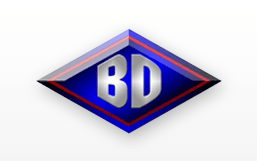Choosing a Fuel: Oilheat or Natural Gas?
Many New Yorkers have a choice of whether to heat by oil or natural gas. Blue Diamond sells both fuels, but in our view, Oilheat is the better option for most customers. The Consumer Energy Council of America recommends that consumers upgrade their heating oil systems rather than switch fuels, and we agree. However, if you're determined to convert, we are more than willing to help. To get started, please visit our Oil-to-Gas Conversions page. For those of you who are still undecided, here is how Oilheat and natural gas compare on a few crucial variables.
Emergency Service and Preventive Maintenance: As an Blue Diamond customer, you can choose the fuel you prefer without sacrificing on service, because we provide a full range of services for both residential and commercial customers, including 24-hour emergency coverage for both types of systems.
Price: In 12 of the 17 years from 1992 to 2008, the average annual price of Oilheat in New York State was lower than the annual average price of utility gas, according to the U.S. Energy Information Administration.
Environmental Impact: Both fuels burn cleanly with minimal adverse effects on the environment. In fact, studies have found that in many cases, biofuels like Bioheat® heating oil actually burn cleaner than natural gas.
Equipment Costs: New heating equipment for Oilheat and natural gas are priced comparably. Upgrading to new equipment without switching fuels is less expensive than undertaking a fuel conversion. Blue Diamond offers both upgrades and conversions.
Price Conversion Calculator
Oilheat is the best choice for safety, and it has a great track record on value. If you are curious how costs compare for Oilheat and natural gas, this online calculator can help. Please follow the instructions below to compare prices, including the additional charges that utilities levy on their customers.
We've included two sample gas bills below (click on each one to view an enlarged version). You'll see that we've circled the locations where you'll get the information you need for each step.
 Sample Bill 1 (Click to expand)  Sample Bill 2 (Click to expand) |










